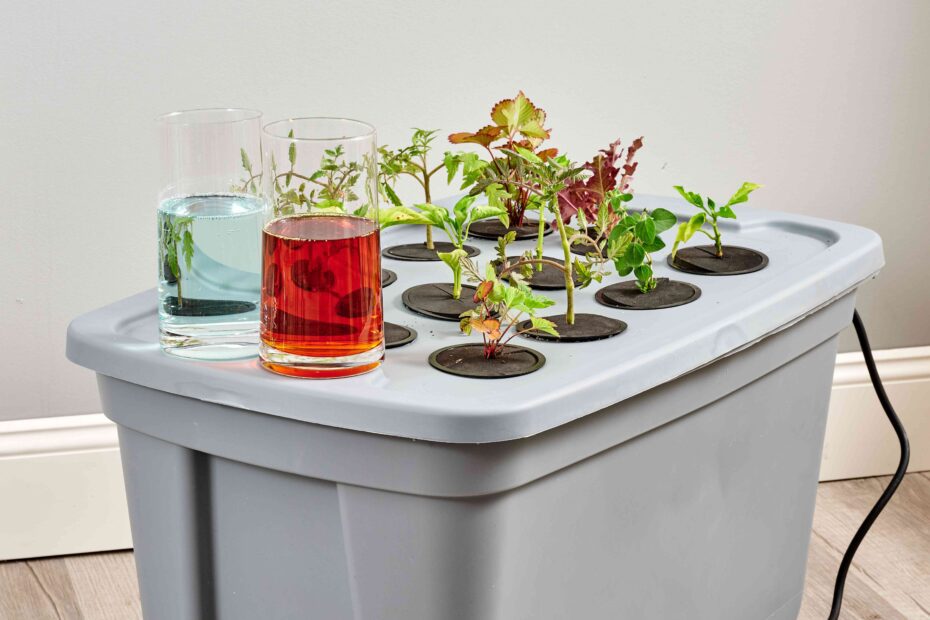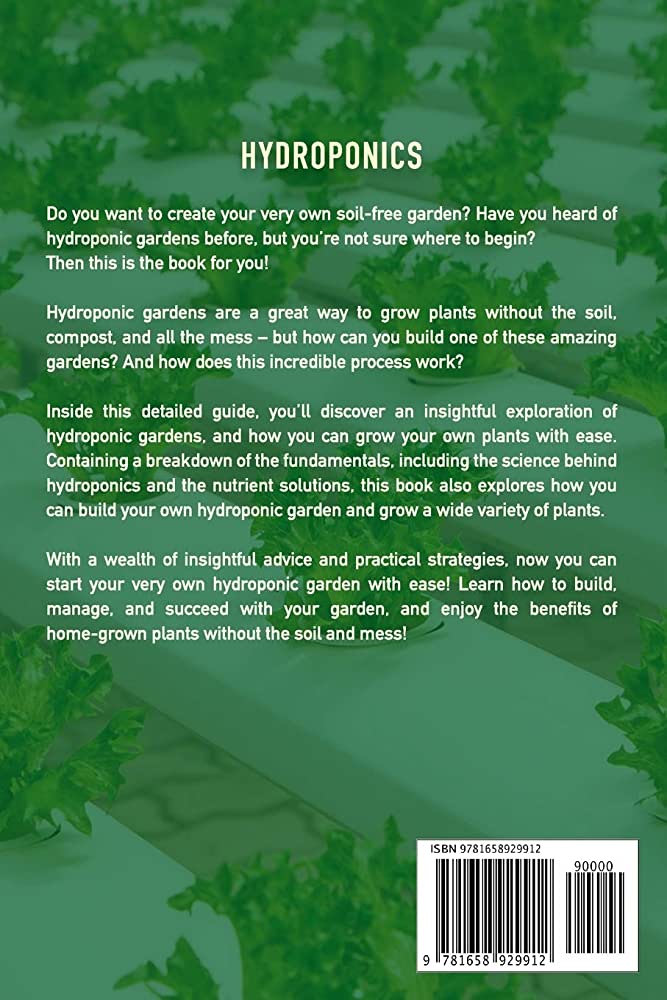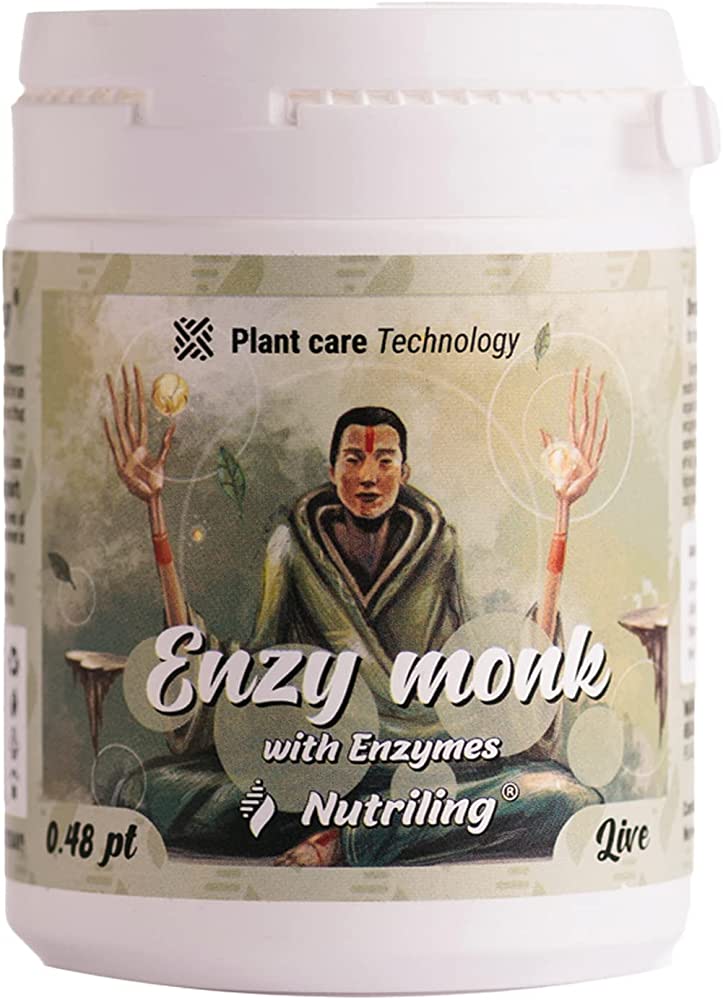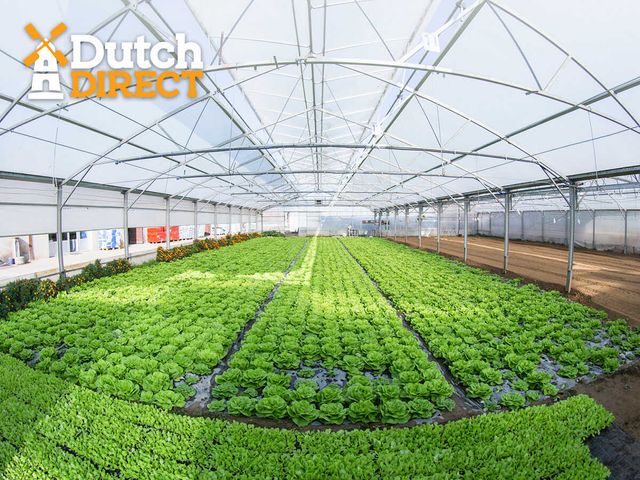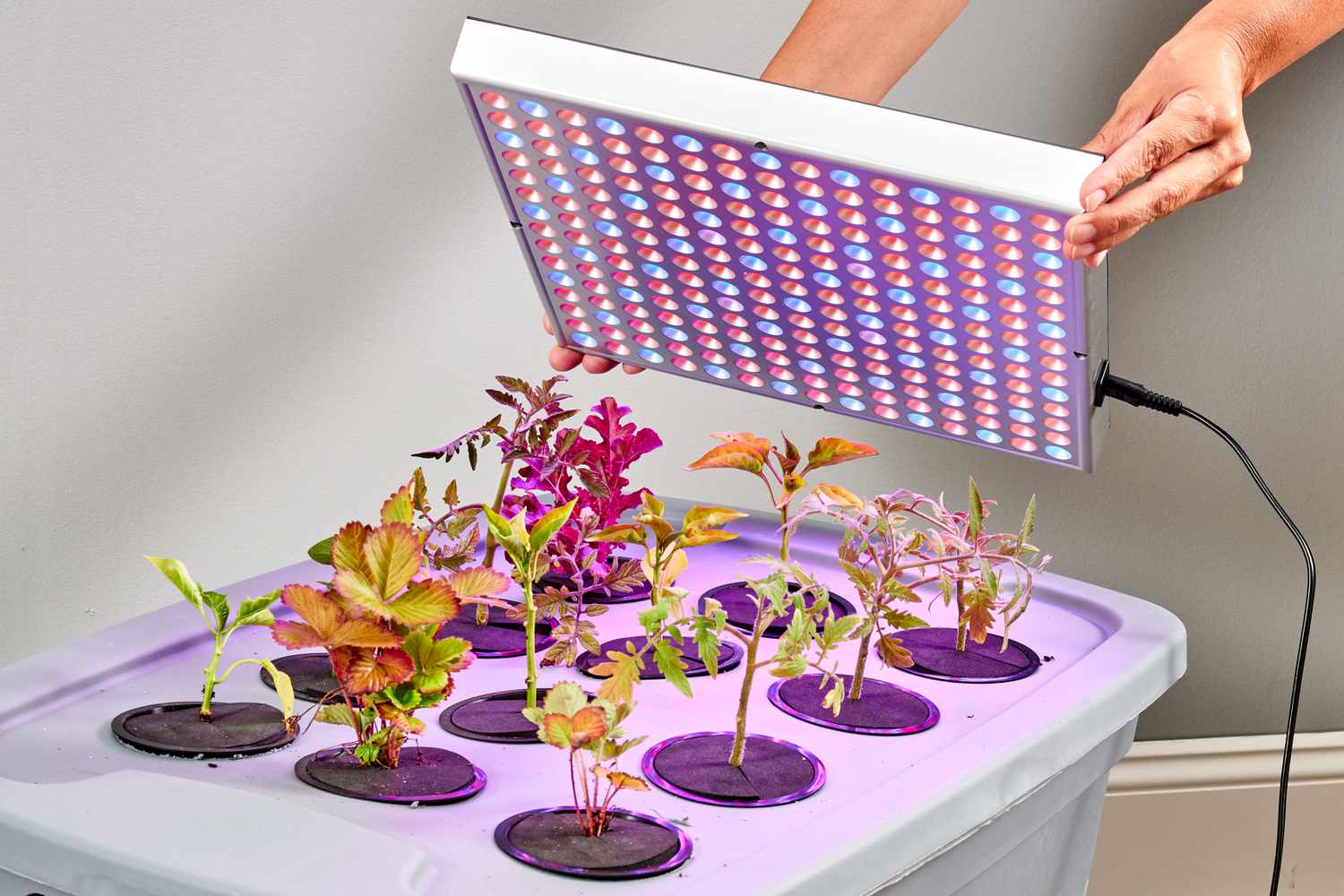Diy nutrient solutions for hydroponic gardening can be made with a few essential ingredients and a precise combination of macronutrients and micronutrients. Hydroponic gardening does not use soil, but instead, plants are grown in a nutrient-rich water solution.
To make a nutrient solution at home, you will need to understand the necessary plant nutrients, such as nitrogen, phosphorus, and potassium, and how to create the correct balance with micronutrients like calcium, magnesium, and iron. With the right tools and knowledge, you can mix a nutrient solution tailored to your specific plants’ needs, ensuring healthy growth and a bountiful harvest.
However, it’s essential to keep track of the ph level and adjust it as necessary to prevent nutrient deficiencies or toxicities. With a bit of experimentation and patience, you can create your own diy nutrient solution and enjoy a thriving hydroponic garden.
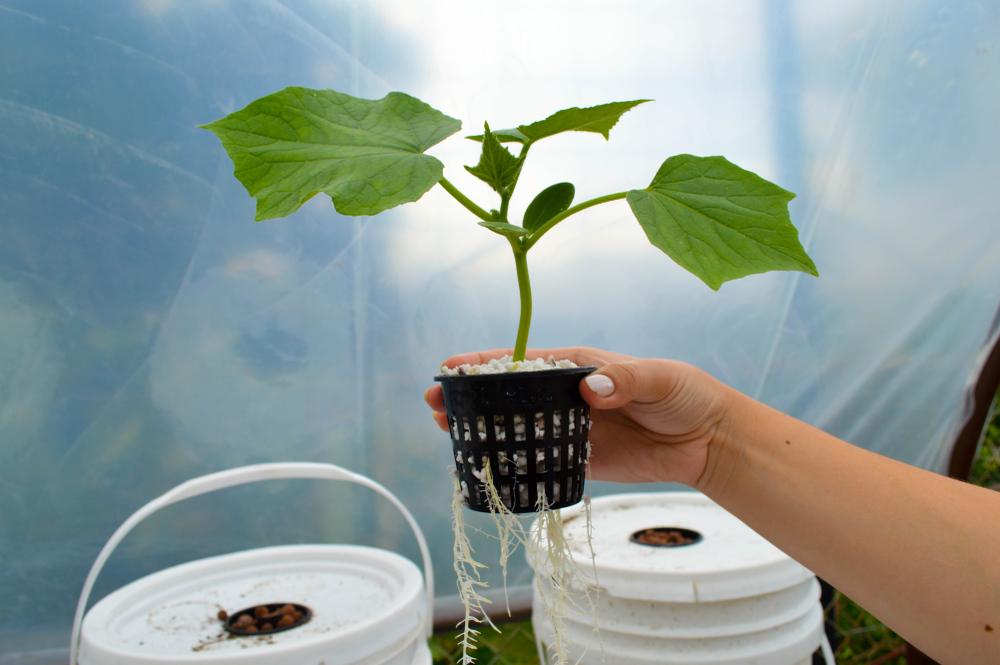
Credit: modernfarmer.com
Why Diy Nutrient Solutions
Cost-Effectiveness Of Diy Solutions
One of the main reasons why many hydroponic gardeners choose to make their nutrient solutions is due to the significant cost savings it offers. Purchasing pre-made nutrient solutions can be expensive, particularly if you have a large garden or multiple crops.
By making your nutrient solution, you can buy the ingredients in bulk and create your solution for a fraction of the cost. This cost-effectiveness allows you to keep your hydroponic garden healthy and thriving without breaking the bank.
- Diy nutrient solutions are cost-effective, allowing gardeners to save money
- Buying ingredients in bulk allows you to create your solution at a fraction of the cost of pre-made solutions
Environmental Benefits Of Diy Nutrients
Another compelling reason to consider diy nutrient solutions is the environmental benefits. Many pre-made nutrient solutions contain synthetic chemicals that can have detrimental effects on the environment. By making your nutrient solution, you can choose organic and natural ingredients that are safer for the environment.
Additionally, you can reduce the amount of plastic waste by reusing containers and buying ingredients in bulk.
- Diy nutrient solutions can be made with organic and natural ingredients
- Homemade nutrient solutions reduce the use of synthetic chemicals that can harm the environment
- Reusing containers and buying ingredients in bulk reduces plastic waste
Controlling Nutrient Quality With Diy Solutions
Making your nutrient solution also allows you to have complete control over the quality of the solution. When you purchase pre-made solutions, you have no way of knowing exactly what is in the nutrient solution. By creating your nutrient solution, you can ensure that the ingredients are fresh, high-quality, and provide the exact nutrients your plants need for optimal growth.
- Diy nutrient solutions offer complete control over the quality of your nutrient solution
- You can ensure that all ingredients are fresh, high-quality, and provide the necessary nutrients for healthy plants
The Satisfaction Of Creating Your Nutrient Solutions
Finally, one of the most satisfying reasons to make your nutrient solution is the sense of accomplishment that comes with creating something from scratch. When you make your nutrient solution, you have complete control over the process, and the end result is entirely your own creation.
It provides immense satisfaction and pride to see your hydroponic plants grow and thrive with the nutrient solution you personally created.
- Making your nutrient solutions gives a sense of accomplishment
- It provides immense satisfaction and pride to see your hydroponic plants thrive with the nutrient solution you personally created.
Getting Started With Diy Nutrient Solutions
Diy nutrient solutions for hydroponic gardening: getting started with diy nutrient solutions
As an avid gardener, have you ever wondered how to grow plants hydroponically and how to optimize their growth with nutrients? For those who are new to hydroponics, it may seem intimidating, but it is quite simple. Hydroponic gardening is a method of growing plants without soil, and instead, the plants’ roots are submerged in water fortified with nutrient-rich solutions.
So, if you’re interested in getting started with hydroponic gardening and making your own nutrient solutions from scratch, read on.
Required Materials And Tools For Making Your Nutrient Solution
First and foremost, let’s go over the necessary materials and tools that you’ll need before starting your nutrient solution-making process:
- A ph testing kit
- A nutrient solution recipe
- A container for mixing the solution
- Distilled water
- Measuring spoons
- Measuring cups
- Nutrient salts
Best Practices For Mixing Nutrient Solutions
To create the perfect nutrient solution for your hydroponic garden, you should follow these best practices:
- Always start with a clean container for mixing your solution, and never reuse the previously mixed solution.
- Mix one nutrient salt at a time, making sure the previous salt has fully dissolved into the water before adding a new salt.
- Use distilled water instead of regular tap water to avoid adding any unwanted minerals or chemicals to your solution.
- Always ensure that the ph level of the nutrient solution falls within the desired range for your plants (usually between 5.5 to 6.5 for most plants). Use a ph testing kit to adjust it accordingly.
- Measure the nutrient solution properly. Hurriedly adding too many nutrients or too few can result in stunted plant growth or even plant death.
Tips For Calibrating Nutrient Solution Levels
Even if you follow all the essential steps mentioned above, you may still need to calibrate your nutrient solutions to ensure optimal growth for different plants. These tips will assist you in calibrating the nutrient solutions:
- Know your plant needs before mixing a nutrient solution, including what kind of nutrient profile will support their growth and how much your plants require.
- Keep a record of each nutrient solution mix and its impact on plant growth to find out the right nutrient balance specific to your plants.
- Adjust nutrient ratios based on the growth stage of the plants.
- Monitor your plants’ roots carefully, as issues with the nutrient solution concentration are often seen in root health.
Making diy nutrient solutions may sound challenging to beginners, but with the right materials, tools, and knowledge, creating a nutrient-rich solution is easy. Just follow the best practices for mixing your nutrient solution and calibrate it based on your plant’s growth and development.
Your hydroponic plants will be sure to thrive with nutrient-rich water, which is the foundation of hydroponic gardening.
Diy Nutrient Solution Recipes
Hydroponic gardening enables you to grow plants all year round. Instead of using soil, hydroponic gardening uses nutrient-rich water to grow plants. One crucial aspect of hydroponic gardening is the nutrient solution. Fortunately, you can easily make your own diy nutrient solutions at home.
Here are five recipes that you can try:
Recipe 1: Basic Nutrient Solution
A basic nutrient solution is suitable for most plant types. Here are the key points for creating a basic nutrient solution:
- Combine one teaspoon of calcium nitrate, one teaspoon of magnesium sulfate, and one teaspoon of hydroponic micronutrient solution in one gallon of water.
- Stir the mixture until the powders dissolve.
- Adjust the ph level between 5.5 and 6.5 using a ph test kit.
- Use this solution to water your plants.
Recipe 2: Nutrient Solution With Compost Tea
Compost tea is a fantastic way to add beneficial microbes to your nutrient solution. Here are the key points for creating a nutrient solution with compost tea:
- Combine one gallon of water and one cup of compost in a container.
- Stir the mixture every couple of days for two weeks.
- Filter the solution using cheesecloth to remove any solids.
- Mix four cups of compost tea with one gallon of water.
- Add one teaspoon of hydroponic micronutrient solution to the mixture.
- Adjust the ph level between 5.5 and 6.5 using a ph test kit.
- Use this solution to water your plants.
Recipe 3: Nutrient Solution For Bloom Stage
Plants in the bloom stage require different nutrients than plants in the vegetative stage. Here are the key points for creating a nutrient solution for the bloom stage:
- Combine one teaspoon of calcium nitrate, one teaspoon of potassium sulfate, and one teaspoon of hydroponic bloom nutrient solution in one gallon of water.
- Stir the mixture until the powders dissolve.
- Adjust the ph level between 5.5 and 6.5 using a ph test kit.
- Use this solution to water your plants in the bloom stage.
Recipe 4: Nutrient Solution For Vegetative Stage
Plants in the vegetative stage also require different nutrients than plants in the bloom stage. Here are the key points for creating a nutrient solution for the vegetative stage:
- Combine one teaspoon of calcium nitrate, one teaspoon of potassium nitrate, and one teaspoon of hydroponic vegetative nutrient solution in one gallon of water.
- Stir the mixture until the powders dissolve.
- Adjust the ph level between 5.5 and 6.5 using a ph test kit.
- Use this solution to water your plants in the vegetative stage.
Recipe 5: Nutrient Solution Using Organic Ingredients
If you prefer using organic ingredients, here is a key point for a nutrient solution for hydroponic gardening:
- Combine one tablespoon of fish emulsion, one tablespoon of liquid seaweed, one tablespoon of molasses and one gallon of water.
- Stir the mixture until the ingredients dissolve.
- Adjust the ph level between 5.5 and 6.5 using a ph test kit.
- Use this solution to water your plants.
Making your own diy nutrient solutions is quite simple and saves money. Just make sure you follow the guidelines closely, and your plants will thank you with healthy, bountiful yields.
Using And Maintaining Diy Nutrient Solutions
The process of using and maintaining diy nutrient solutions is one of the most critical elements in hydroponic gardening. Diy nutrient solutions are essential since they are cost-effective and unique to each gardener’s specific needs. Below are some best practices, tips, and common problems that you should know about while using diy nutrient solutions.
Best Practices For Using Diy Nutrient Solutions
When using diy nutrient solutions in hydroponic gardening, the following best practices should be considered:
- Always start with a recipe: It is crucial to have a nutrient solution recipe before embarking on hydroponic gardening. This ensures that you have a clear idea of the appropriate nutrients and ratios to use.
- Use quality products: Use the highest quality products when making diy nutrient solutions. This guarantees that the solution will be effective and free from any contaminants.
- Be consistent: Consistency is essential in maintaining nutrient solution levels. The ph of the solution should be maintained at the recommended levels to avoid any alterations in the nutrient’s availability.
- Understand the plants’ nutritional requirements: The plants’ needs should be taken into account when preparing the nutrient solution. Different plants require different vitamins and minerals, so ensure that the solution meets their unique requirements.
Monitoring And Adjusting Nutrient Solution Levels
Monitoring diy nutrient solutions is a crucial aspect of hydroponic gardening. Maintaining nutrient levels and ph levels are essential to any plant’s health. Here are some tips on how to monitor and adjust diy nutrient solutions:
- Check the ph levels regularly: Ph levels should be tested regularly since plants are sensitive to variations in acidic or alkaline conditions.
- Monitor nutrient concentrations: Concentration is another essential aspect of monitoring nutrient solutions. Make sure to monitor the ratios of each nutrient to avoid deficiencies or toxic levels.
- Adjust nutrient solution: You can adjust the nutrient solution by adding the appropriate nutrients to stabilize the solution. The ph level can be adjusted by using ph adjusters such as ph up or down solutions.
Common Nutrient Solution Problems And Solutions
Problems can occur in diy nutrient solutions, and most of the time, they are easily solvable. Here are some common nutrient issues and solutions:
- Nutrient deficiency: Nutrient deficiency is a common problem in hydroponic gardening. This can be solved by adding additional nutrients to the solution.
- Root rot: Root rot is another common problem in hydroponic gardening that arises from bacterial or fungal issues. Ensuring adequate oxygen levels in the nutrient solution can solve this problem.
- Nutrient lockout: Nutrient lockout happens when the nutrients in the solution are not available to plants. This can be resolved by altering the ph levels of the solution.
Diy nutrient solutions are cost-effective and effective in hydroponic gardening. It’s critical to monitor and maintain nutrient solution levels making sure you check for common problems regularly. Following the best practices and tips provided above will ensure your home hydroponic garden thrives and yields bountiful produce.
Frequently Asked Questions Of Diy Nutrient Solutions For Hydroponic Gardening
How Do You Make Homemade Hydroponic Nutrient Solution?
To make homemade hydroponic nutrient solution, combine water with specific salts and minerals in the correct ratio according to the plant’s growth stage.
Can You Use Tap Water For Hydroponics?
Tap water can be used for hydroponics, but it may need to be treated to adjust the ph level and remove any harmful chemicals that may affect plant growth.
What Nutrients Do Hydroponic Plants Need?
Hydroponic plants require macronutrients like nitrogen, phosphorus, and potassium, as well as micronutrients like calcium, magnesium, and iron to grow healthy.
How Often Do You Need To Change Hydroponic Nutrient Solution?
The frequency of changing hydroponic nutrient solution depends on the plant type, growth stage, and water quality. Typically, it is recommended to change the solution every 2-3 weeks.
Are Store-Bought Hydroponic Nutrients Better Than Homemade?
Store-bought hydroponic nutrients are more convenient and offer a balanced nutrient profile. However, homemade nutrient solutions allow for more customization and are often cheaper.
Do Hydroponic Plants Grow Faster Than Soil-Grown Plants?
Hydroponic plants can grow faster than soil-grown plants due to the availability of nutrients and oxygen, as well as the ability to control growing conditions more closely.
Conclusion
Overall, creating your own nutrient solutions for hydroponic gardening can be a cost-effective and rewarding experience. With a bit of knowledge and experimentation, you can tailor your solutions to fit the exact needs of your plants and maximize their growth potential.
Remember to keep in mind the essential elements that plants require and adjust your formula accordingly. Don’t be afraid to try new ingredients or ratios, and always keep track of your results to fine-tune your process. Additionally, incorporating organic and sustainable practices will benefit both your plants and the environment.
By taking control of your nutrient solutions, you can have a thriving hydroponic garden that is unique to you and your growing needs. So, get creative, have fun, and enjoy the fruits of your labor!
- The Power of Mobile Accessibility And Real-Time Tracking for Trucking Operations - November 6, 2024
- Why Ease of Use is Crucial in Trucking Dispatch Software - September 22, 2024
- Better Communication With Dispatchers: How Trucking Dispatch Software Can Optimize Operations - September 7, 2024
